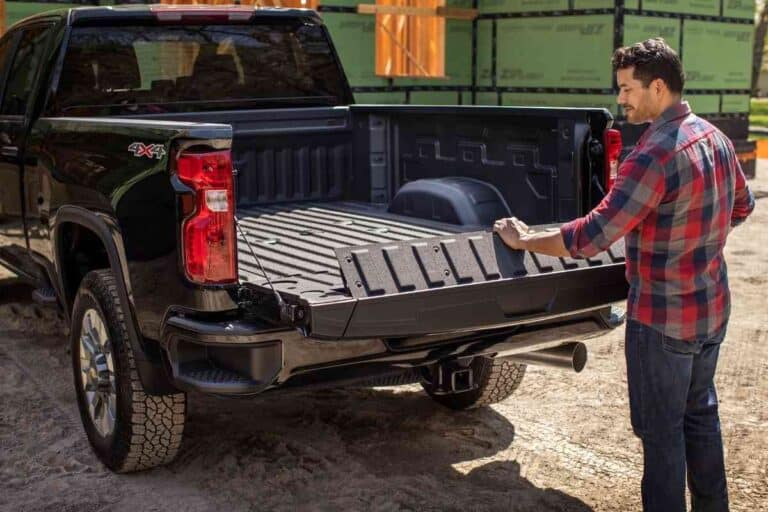What Does 2x4 Mean On A Truck

Alright, let's demystify what "2x4" means when you see it applied to a truck. It's a common term, but understanding the nuances behind it is crucial for any intermediate car owner, modder, or DIY mechanic. Knowing this isn't just trivia; it's fundamental for understanding a truck's capabilities, planning modifications, and even diagnosing potential problems. We're going to break it down so you can confidently identify drivetrain configurations and understand their implications.
Purpose of Understanding Drivetrain Configuration
Why bother learning about this? Simple: understanding drivetrain configuration is essential for a multitude of reasons:
- Repairs and Maintenance: Knowing whether you have a 2x4 or a 4x4 is the first question any parts supplier will ask. You need the correct components designed for your specific setup.
- Performance Tuning: Modifying a 2x4 truck for off-road use requires a vastly different approach than modifying a 4x4. Understanding the drivetrain limitations will guide your choices.
- Diagnostics: Certain drivetrain issues are specific to 4x4 systems. Knowing your truck's configuration helps you narrow down the potential causes of a problem.
- Learning and Exploration: As an enthusiastic DIYer, understanding how different drivetrain configurations work gives you a deeper knowledge of automotive engineering.
Key Specs and Main Parts of a 2x4 Drivetrain
The term "2x4" (or sometimes written as 4x2) specifies the number of driven wheels versus the total number of wheels on the vehicle. In a 2x4 truck:
- The first number (2) indicates the number of *driven* wheels.
- The second number (4) indicates the *total* number of wheels.
Therefore, a 2x4 truck has two driven wheels out of a total of four. Typically, in modern trucks, this means it is a rear-wheel drive (RWD) vehicle. Here are the key components involved:
Engine
The engine generates the power that drives the entire system. It's the heart of the truck, and its output (horsepower and torque) directly impacts performance.
Transmission
The transmission manages the engine's power, converting it into usable force for the wheels. It uses gears to provide different levels of torque and speed. Most trucks use automatic transmission, but some can use a manual transmission.
Driveshaft
The driveshaft (also called a propeller shaft) is a rotating shaft that transmits power from the transmission to the rear axle. It's a critical link in the drivetrain.
Rear Axle/Differential
The rear axle houses the differential. The differential allows the wheels to rotate at different speeds during turns. It's essential for smooth cornering on paved roads. The differential contains gears that split the engine’s torque and deliver it to the rear wheels.
Wheels and Tires
Finally, the wheels and tires are where the power meets the road. They provide the traction needed to move the vehicle. Different tire types are suited for different conditions (e.g., all-season, mud-terrain).
How It Works
The process is fairly straightforward. The engine generates power, which is then transferred to the transmission. The transmission selects the appropriate gear ratio based on the driver's input and the vehicle's speed. The driveshaft then transmits this power to the rear axle's differential. The differential splits the power between the rear wheels, allowing them to rotate at different speeds when turning. Finally, the wheels and tires grip the road, propelling the truck forward.
In a 2x4 truck, the front wheels are *not* driven. They simply rotate freely, guided by the steering system.
Real-World Use and Basic Troubleshooting
2x4 trucks are typically preferred for on-road driving due to their better fuel economy, simpler design (meaning potentially fewer maintenance issues), and often, a lower purchase price. However, they are less capable in off-road situations due to the lack of power to the front wheels.
Here are some basic troubleshooting tips specific to a 2x4 drivetrain:
- Excessive Wheel Spin: If the rear wheels are spinning excessively, especially on wet or slippery surfaces, it indicates a lack of traction. This is a common issue with 2x4 trucks. Try using a lighter throttle or adding weight to the rear of the truck (if appropriate).
- Driveshaft Vibration: If you feel a vibration coming from under the vehicle, particularly at higher speeds, it could be a sign of a worn U-joint on the driveshaft. Inspect the U-joints for play or damage and replace them as needed.
- Differential Noise: Unusual noises coming from the rear axle (whining, grinding, or clunking) could indicate a problem with the differential. Check the differential fluid level and condition. If the fluid is low or contaminated, top it off or replace it. If the noise persists, professional diagnosis is recommended.
Safety Considerations
When working on any vehicle, safety is paramount. Here are a few specific safety considerations relevant to a 2x4 drivetrain:
- Driveshaft: The driveshaft rotates at high speeds, so never work near it while the engine is running or the vehicle is in gear. Always disconnect the battery and use jack stands to support the vehicle securely before working underneath.
- Differential: The differential contains gears and oil, so be careful when handling it. Wear gloves to protect your hands from the oil and sharp edges. Dispose of used oil properly.
- Springs and Suspension: The rear suspension uses springs and/or leaf springs to support the truck's weight. These components can store a significant amount of energy. Use caution when working on the suspension, and always use the correct tools and procedures to avoid injury.
Conclusion
Understanding the fundamentals of a 2x4 drivetrain is invaluable for any truck owner or DIY mechanic. It allows you to make informed decisions about maintenance, modifications, and repairs. By understanding the role of each component and the principles behind its operation, you'll be better equipped to keep your truck running smoothly and safely.
